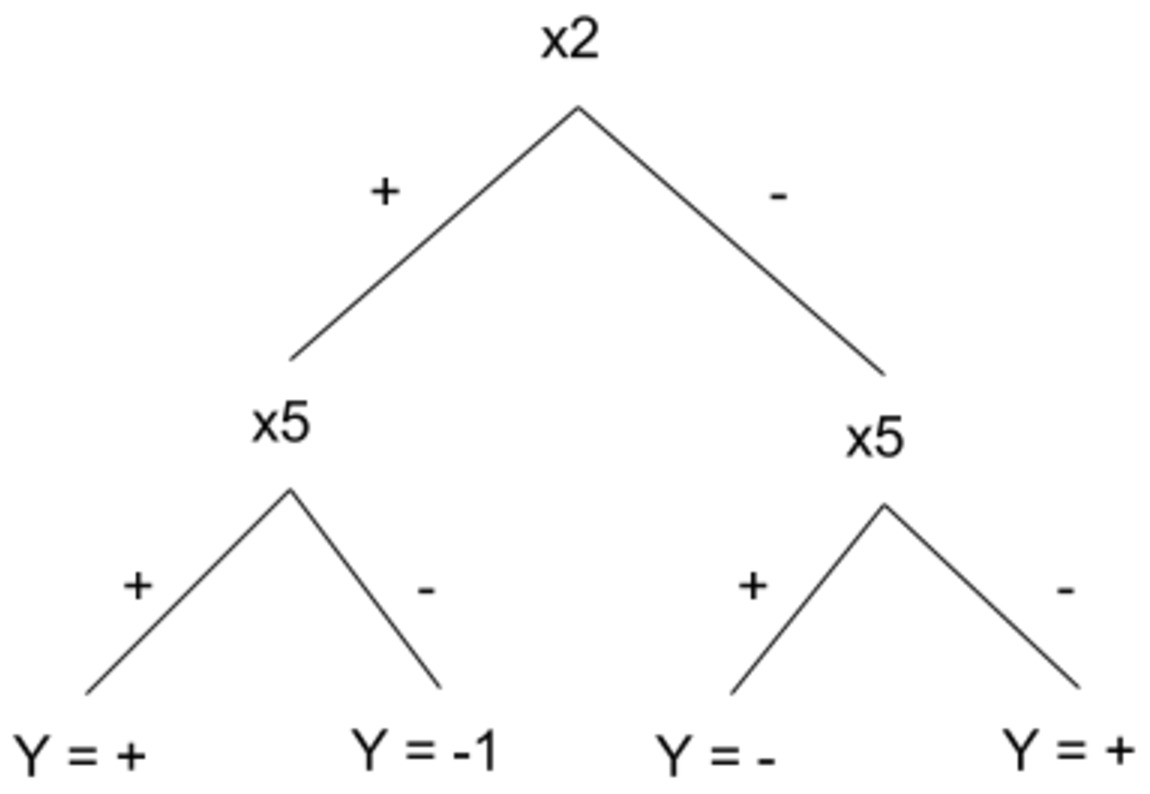
Due: Sunday, December 3rd, 2017 at 11:59pm PST.
In this homework you will use the diabetes dataset for running your experiments in problem 1 and 3. For your ease of use, we have provided the links to the libsvm format and the C4.5 format of the same data in problem 1 and problem 3.
1.0 We will be using your ID3 learner from homework 1. If you suspect your implementation was faulty, you are free to use an existing implementation of these algorithms (e.g. the J48 learner in the Weka Java libraries).
Implement the bagging algorithm on top of your decision tree learner. You should make your code as modular as possible. Namely, your main module of bagging should treat the base learner as a black box and communicate with it via a generic interface that inputs a set of instances and outputs a classifier, which then can classify any instances. Create a wrapper for ID3 which takes a training set of examples and use sampling with replacement to generate a new training set of the same size; the wrapper then passes on this set to ID3 to obtain a classifier. Plug this wrapper and your ID3 implementation into the bagging algorithm.
Run experiments using the UCI Diabetes Dataset. Use information gain as the evaluation criterion and disable pruning for all experiments. Your goal is to predict whether the test is positive or negative for diabetes.
Background: A description of the Diabetes Dataset can be accessed here. This dataset was gathered among a population that is at high risk of diabetes by the National Institute of Diabetes and Digestive and Kidney Diseases. The dataset consists of 768 cases, 8 variables and 2 classes. The variables are medical measurements on the patient plus age and pregnancy information. The classes are: tested positive for disbetes or negative.
Plot test set accuracies for 1, 3, 5, 10, and 20 samplings.
1.1 Modify your ID3 to accept a parameter of maximum depth, beyond which no further splitting is allowed. Consider the ID3 learner alone, speculate whether its bias increase or decrease with this parameter? What about its variance? Why? Verify your conclusion by actually measuring bias and variance for different numbers of maximum depth. At the minimum, try maximum depths of 1, 2, and 3.
To learn more about bias-variance decomposition, see Pedro's ICML paper. Pedro also has a reference implementation. In this homework, generate at least 10 bootstrap samples (30 is recommended if you could afford it) from the original training set and use them when you compute the bias and variance.
1.2 How does the accuracy obtained by ID3 with bagging change as the maximum depth varies? Why? Measure bias and variance in each case. What does this say about your hypothesis?
2.0 Suppose we have data with 10-dimensional boolean features [X1,...,X10] which belong to either of Y= + or Y = - classes. We would like to describe our data by a depth-2 regular decision tree. How many examples do we need for training to guarantee with 99% confidence that the learned binary tree has true error of at most 3%?
Appendix: A regular depth-2 decision tree is a decision tree with depth 2 and four leaves and it is required that the left and right child of the root to test the same attribute. An example of a regualr depth-2 decsion tree is shown below. Please note that only two attributes are used for building such a tree.

3.0 What is the VC Dimension of the class of k intervals on the real line. (Hint: Start by considering only one interval and then the union of 2 intervals and justify the generalized case of k intervals. You don’t have to give a formal proof but you must present the key ideas from which the reader could construct a formal proof.)
4.0 Download LIBSVM, currently the most widely used SVM implementation. Peruse the documentations to understand how to use it.
4.1 Download the diabetes dataset.
4.2 Run LIBSVM to classify diabetes. Try different kernels (0-3) and use default parameters for everything else. How does it vary with different choice of kernel?
4.3 Modify your neural network classifier from homework 3 to apply to this dataset. How does the accuracy compare to what can be obtained using LIBSVM? Why?
4.4 How do your accuracies compare with that of the bagged decision tree from problem 1.0? Also, measure the bias and variance of SVMs on the diabetes dataset and compare with bagging's. Explain the difference (or lack of difference).